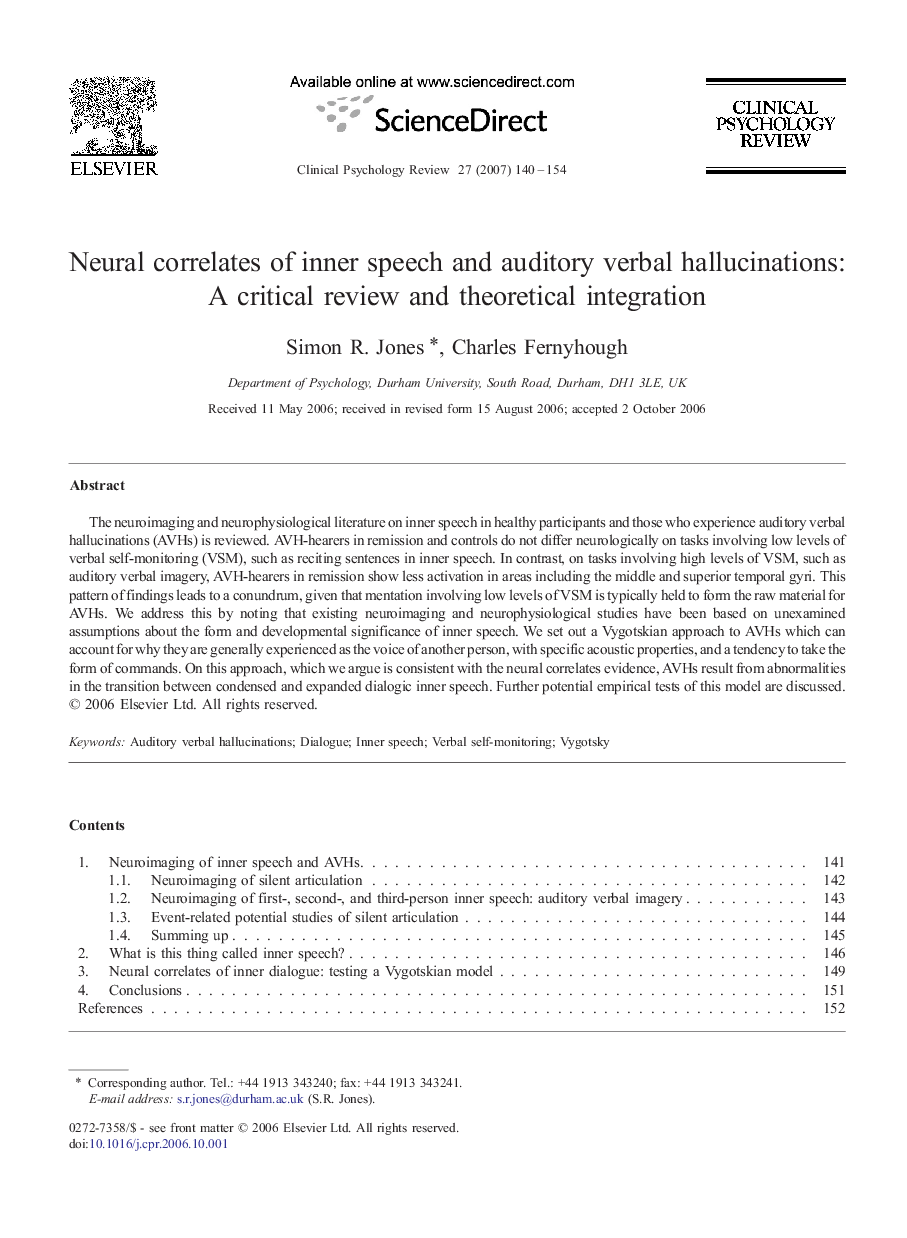ترجمه فارسی عنوان مقاله
ارتباطات عصبی گفتار درونی و توهم شنوایی کلامی: نقد و ادغام نظری
عنوان انگلیسی
Neural correlates of inner speech and auditory verbal hallucinations: A critical review and theoretical integration
| کد مقاله | سال انتشار | تعداد صفحات مقاله انگلیسی |
|---|---|---|
| 60896 | 2007 | 15 صفحه PDF |
منبع

Publisher : Elsevier - Science Direct (الزویر - ساینس دایرکت)
Journal : Clinical Psychology Review, Volume 27, Issue 2, March 2007, Pages 140–154
ترجمه کلمات کلیدی
توهم کلامی شنوایی؛ گفتگو؛ گفتار درونی؛ خودنظارتی کلامی ؛ ویگوتسکی
کلمات کلیدی انگلیسی
Auditory verbal hallucinations; Dialogue; Inner speech; Verbal self-monitoring; Vygotsky

